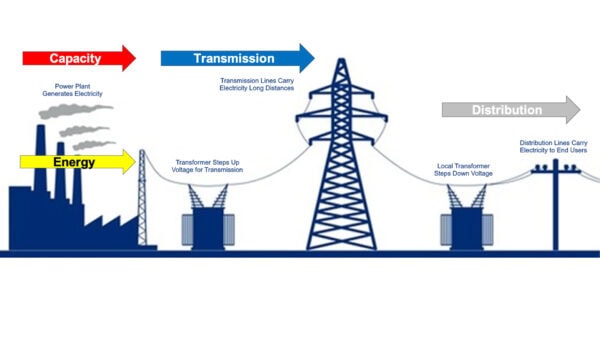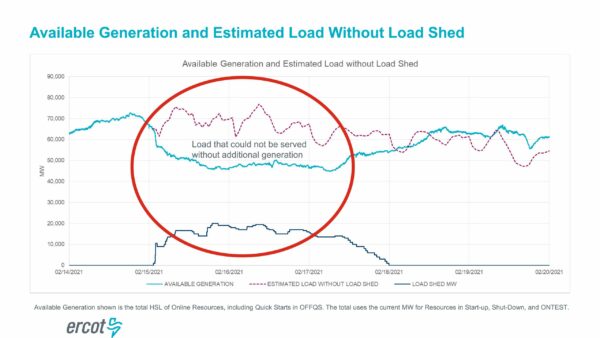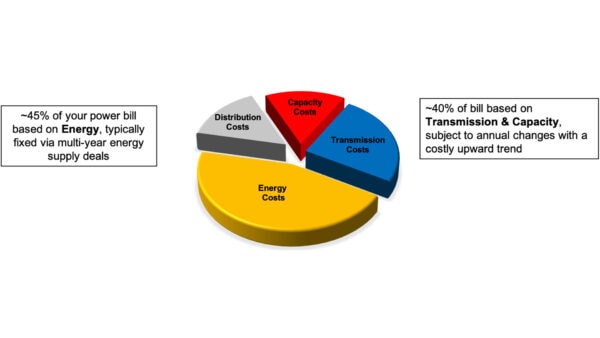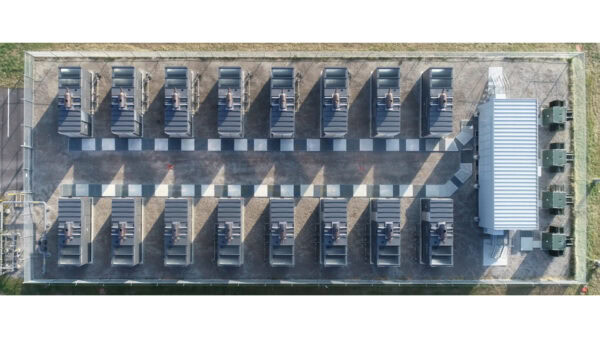As extreme weather events and grid outages continue to increase in frequency, it is becoming clear that industry stakeholders must take more control of their electric load to create the business continuity that we have grown to expect in a modern society. One of the most prevalent topics in the energy market today is resiliency and today we will provide some insight into what it actually is, to whom it applies, which solutions are available and how it can benefit your business.
Resiliency can be an ambiguous term, and context is important in this case. Today we are discussing energy resiliency as it applies to your business. More specifically, the four walls of your facilities and the equipment and processes that operate within them. Although fundamentally connected (we’ll get into this), grid-level resiliency, which is the ability for utilities to withstand increasingly likely, high-impact events, is an expansive topic that is at the forefront of policymaker and utility stakeholders’ minds. This subject includes government regulation, climate change, natural disasters and cyber-attacks, among other things. We will leave some of those broader topics for another day and stay focused on how you can affect your business’s energy resiliency.

All levels of the electric grid system are responsible for maintaining resiliency and reliability for their customers.
On its face, energy resiliency at your facility is a straightforward concept. It is all about ensuring that you as an energy user have a reliable and consistent supply of energy and the contingency measures are in place in the event of a loss of power. One immediate question you might have is “isn’t that what my utility/grid is supposed to be doing for me?” And the answer to that to some degree is yes—all parts of the energy supply chain (from energy generation, transmission and distribution) are responsible for maintaining resiliency. For example, one of the reasons why transmission costs are rising year-over-year is because of the increasing costs of maintaining grid resiliency driven largely by the aging transmission infrastructure.
How Much Would a Power Outage Cost Your Business?
As we’ve seen recently in ERCOT and other grid-operating areas, the promised grid resiliency sometimes fails, and business owners and residents are left without power. In the case of the recent ERCOT event, a combination of generation and transmission-level failures led to the sustained outages that we saw.
Whether or not you directly experienced the effects of the Texas grid crisis of February 2021, it is not difficult to place yourself in the shoes of a business owner that had shut down their operations for days while the grid got itself back online. How many sensitive processes will be interrupted with a loss of power? How much lost revenue would your business experience if operations were unexpectedly halted for three consecutive days? Once power returns, could your business processes restart immediately, or would it take hours or days to resume normal operations? Although it can sometimes be difficult to firmly determine, it benefits every business to ask these questions and understand the bottom-line consequences of grid failures. This theoretical exercise became a grim reality for business owners in Texas.
February 2021 ERCOT grid crisis: a lesson in the consequences of failed grid resiliency:

Source: ERCOT Texas Legislative Hearings February 25, 2021
Although there are often robust measures in place to protect the electric grid and maintain resiliency through major events, we know that 99.999% uptime at your business is not possible if you are relying solely on the grid for energy resiliency.
How Can Your Business Benefit from On-Site Resiliency?
The simple answer to that is anyone that has critical electric loads and wants more control over of their energy load can benefit. This then begs the obvious questions: “what is a critical load?” and “how do I gain more control of my energy usage?”
A critical load is the portion of an electric user’s load that is essential for business operations and its outages have true monetary consequences. Hospitals and critical healthcare facilities, for example, have huge portions of their load that supply power to life-sustaining systems and are required to have back-up generation in place to maintain their facilities’ resiliency. Not all businesses are necessarily threatened with the loss of life in the case of an electric outage, but that doesn’t mean that it can’t affect your bottom line. Power outages can result in loss of revenue through reduced or wasted production, the inability to serve your customers and potential damage to equipment. Sometimes it takes no more than a momentary flicker or blip to cause significant process disruptions or manufacturing equipment failures which require troubleshooting and restart time. This circumstance may warrant the installation of an uninterruptible power supply (UPS or battery storage) to prevent momentary outages and carry the load until a long-term backup system can come online.
Determining how much of your load is truly critical and the financial impact of an outage may be obvious as in the case of hospitals, but it often requires a thorough electrical load analysis and an understanding of operating costs to define. Once a business understands these metrics, they can determine whether an insurance policy against a loss of critical load in the form of on-site generation is the right solution.
Can Resiliency Solutions Be Cost-Effective?
Not only can on-site generation deliver resiliency for critical loads, if done properly it can also provide you with more control over your energy usage and costs. If your business is located in PJM, you are likely familiar with the capacity and transmission portions of your electric bill—these charges make up roughly 40% of your electric costs and are based upon your business’s peak load during just a few hours over the year that correlate with high loads on the grid.

Avoid costly Capacity and Transmission charges by operating on-site generation during peak load conditions.
By operating the on-site assets during peak-load hours, your on-site resiliency solution can begin generating value for your business before the facility ever experiences an electric outage—making the argument for installing resiliency solutions all the more compelling.
There are closely-tracked market signals, things like weather forecasts, industrial load estimates, energy costs, etc., that help energy providers like us predict when capacity and transmission peaks will occur in your market zone. When market signals exceed certain thresholds for a specific hour or hours, the on-site generation asset is turned on and the facility’s grid-load is reduced. Depending on your energy usage and your specific resiliency solution, peak reduction measures can account for millions of dollars of energy savings over the life of an on-site generator.
What Are My Options?
Creating energy resiliency for your business can come in several forms and should be tailored to meet your specific objectives. A traditional standby diesel application may meet those needs, but perhaps an alternative solution may provide more overall value when all factors are considered. Finding the ideal resiliency application truly depends on the portion of your business’s electric load that is determined to be uninterruptible and requires resiliency. Some businesses deem that only systems like sprinklers or emergency lighting require resiliency, which may only require a small standby generator. On the other side of the spectrum, the food and medical testing industries require long-term resiliency capabilities for cold storage but can handle short-term (minutes) outages while engines get up and running. Data centers for example, however, cannot withstand even short-term outages and require active, synchronous resiliency to ensure continuous uptime.
Natural gas generation, combined heat and power (CHP), battery storage (with and without solar), fuel cells or a combination of these can provide robust resiliency and create additional economic value for your business. CHP, also known as cogeneration, is technology that produces both electricity and thermal energy from a single fuel source like natural gas. CHP systems can be engines or turbines (again, depending on the specific use case) and are one of the most efficient ways for businesses to create resiliency and lower their operational costs.
Many options deliver resiliency for your business along with potential value streams from peak load reduction and ancillary market participation.

Robust resiliency for a customer in Ohio.
Interested in learning more?
Choosing the right solution and technology for your business is the first step. OnSite Partners is the partner that can help guide you through project development, implementation and operations. As these are robust energy systems, installation and operating costs are not immaterial; we also have the knowledge and capital to help with any of your financing needs as well.
If you’ve found this blog informative and would like to learn more, please contact us online.
